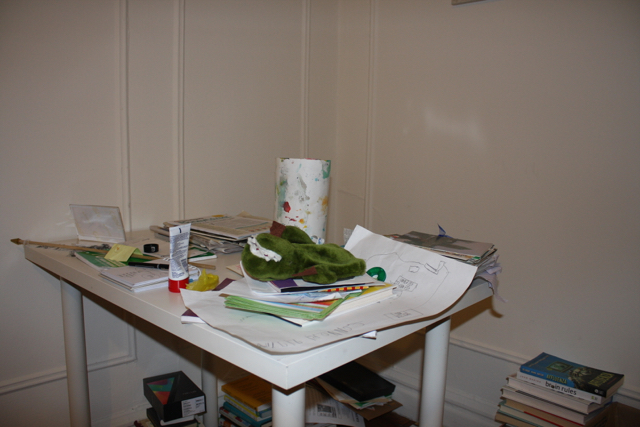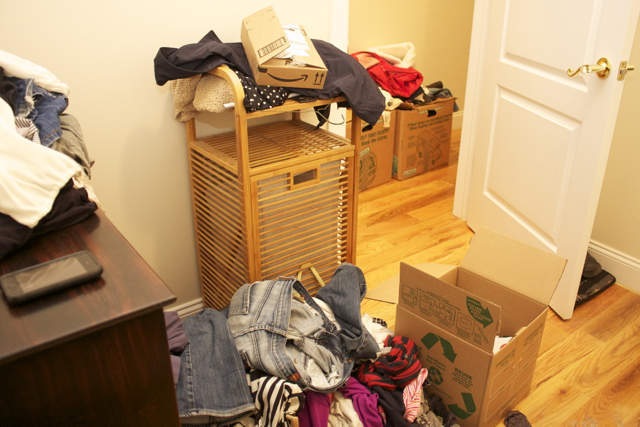Great Advice for Living Simple Inside Strunk & White’s Elements of Style.
I was recently going through my old writing books from college and came across this classic. I started to skim through it to see if I'd remember any of it. I was instantly charmed by the strong decisive voice of writing and decided to read it through just for fun. William Strunk Jr., a Professor of English at Cornell, wrote the book initially to give to his students to make grading their (probably horribly written) papers easier.
One chapter has a subheading: Omit Needless Words.
Vigorous writing is concise. A sentence should contain no unnecessary words, a paragraph no unnecessary sentences, for the same reason that a drawing should have no unnecessary lines and a machine no unnecessary parts. This requires not that the writer make all his sentences short, or that he avoid all detail and treat his subjects only in outline, but that every word tell.
- Strunk & White, Elements of Style
I love that paragraph. Sometimes there is great wisdom in brevity.
Applying this to our lives could be extremely useful as we’ve started to see our consumer bounty become burdens.
As Americans we really know how to spend and shop. Then it starts to become a burden: we then need storage space and bigger homes and closets. At first we criticize the freaks we consider to be the worst of the worst (see Hoarders) until we look around and realize we have become the freaks. We are the ones who’ve failed to maintain brevity in the objects we bring home. So we rent storage units, stuff our garages and hide our excess in attics and basements.
I think it's safe to say the path to hoarding is paved with BOGOF - Buy One Get One Free.
So imagine the paragraph above, but substitute the ideas for writing to living.
Vigorous living is concise. A home should contain no unnecessary objects, a desk no unnecessary decor, for the same reason that a drawing should have no unnecessary lines or a machine no unnecessary parts. This requires not that the individual make all his spaces stark or that he avoid all beauty and the home should be barren, but that every object tell.
That every object tell. Tell what? What do our objects tell about us? Look around and ask yourself what your things are telling you about yourself. Really open those drawers and closets and cabinets and storage bins.
In the past, when I've seen that I have too much back up supplies of toiletries or office supplies, I am quick to recognize that all that extra stuff comes from a fear of running out and being inconvenienced. Or embarrassed, such as when a guest might have to ask me for toilet paper.
And this is one of the (many) reasons we buy and hoard.
In our home, when we have too much stuff the telling (of our own story) gets weaker. Just as a story would lose it’s focus and interest if there were more words than were necessary. Piles of paper and projects create a kind of brain fog that is yet to be studied.
1,000 things in the home don’t tell 1,000 stories, they tell one: the person has too much. The thinking is lost, the living is lost, the goals for everyday enjoyment of life in that space are lost.
For many people, the experience of entering an overstuffed room triggers an impulse to retreat into themselves, to turn inward to avoid the stimulus of seeing too much. I know it happens to me. Cluttered counters and shelves happen in my home when I am not paying attention. When I am not attentive to my work or home space the systems go haywire.
What does haywire look like? Small piles fill empty corners. They grow over days and weeks. You hide things behind doors until the doors don’t open fully. Spacious counters fill up with projects and myriad things to do later. Closets hold more than they were intended to hold.
Below are examples of what happens when there isn't a good system and then life happens. You wake up one day and all around you, in every room, things that prevent you from enjoying your home or your work space.
These spaces need some editing so that life and action can resume. What about you? Do you have certain spots in your home that quickly get out of control? What do you do about it?














